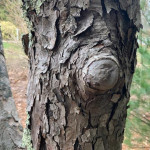The Right Way and The Wrong Way To Prune Trees and Shrubs
At Mayer Tree Service our arborists know pruning is a very important part of our work. Most arborists and horticulturalists are passionate about pruning. Most people enjoy pruning and believe in their methods. The question is how do you know what’s right? Pruning should be more than just removing branches. Before you prune trees and shrubs you need to ask a few important questions that lead to a specific plan.
The 7 Most Important Questions To Ask Before Pruning
The Intent?
What am I trying to accomplish with this particular plant? It can be as simple as removing deadwood or as complicated as espalier. Do you want the plant to look attractive when the pruning is complete or will it take time to respond to the pruning? What are my aesthetic expectations? The intent is the easiest question but you need an answer before you begin. You need to realize that pruning live growth will cause a reaction by the plant. Your intent also means being responsible for how the plan will react.
The Species?
Will this particular plant respond well to my Intent? This is the most difficult question. It requires strong knowledge of the plants you work with and experience of how each species reacts to pruning.
The Timing?
What is the best time of the year to prune? The general rule is if you are going to prune something aggressively the best time of year is late winter/ early spring. The idea is that you are capturing all the energy the plant is generating to push new growth. This energy is channeled to react to the wounding. This pruning leaves the plant with a more natural shape from late spring through the end of the year.
The classic example of aggressive pruning is rejuvenation or basal pruning. Cutting down stocks of shrubs to get new sprouts from the base of the plant. This is very species-specific but if you can do this to the right species it can “rejuvenate” old plants. This is best done in March or April depending on the winter.
January and February are a great time of year to prune most deciduous plants, especially large trees, but not a good time to prune most evergreens.
If you intend to have the least reaction or sprouting, the best time of year to prune is late summer and fall. If you prefer plants to have a manicured appearance then schedule pruning in the summer and early fall. The plants will have this neater look until late spring the following year when the new growth emerges.
People always ask about losing flower buds and fruit. This should be a lower priority because you want to manage the plant with a longer view than one season. I’ve seen too many plants become leggy and unkempt by people not pruning because they were overly concerned with one season’s blossoms.
The Amount?
How much can I remove at once? Some plants lend themselves to aggressive pruning and some plants do not like to be pruned. How you prune a sugar maple should be very different than how you prune a silver maple.
How often will I need to prune this plant to achieve my Intent?
The more formal your objective is the more pruning is required. For example; Espaliers, bonsai, and topiaries will require frequent pruning throughout the year. Once I have the desired result what is the pruning schedule going forward? These decisions require a basic understanding of the particular plant. This prompts another question; Do I have the time and resources to commit to my Intent? Do not start something that will require multiple pruning if you cannot stay the course. In some cases, over-pruning is worse than no pruning at all. Timing and species are critical to the amount pruned. A general rule is to not remove more than 25% of the foliage. Most of the time that is a good rule, but there are instances when less or more is appropriate.
Reaction?
When you remove live growth from a plant there will be a reaction. Knowing how the plant will react requires a great deal of experience. It will also determine the next steps. Sometimes if you prune something aggressively or try to create a formal look you need to commit to following up. This is difficult to explain because it is so specific to the plant, your intent, and the time of year. At a minimum, realize that plants respond to injury. Whether it is Mother Nature or our pruning, the plant will react.
The Condition?
If the plant's health is compromised pruning may further stress the plant and possibly kill it. Old age, insects, disease, shade drought stress can all cause a plant to be vulnerable. Reducing the plants’ ability to photosynthesize when it is compromised is usually a bad idea.
Planning Your Pruning Is Crucial
You need to have a specific plan for each plant because there are so many factors to consider, but using the pruning decision process provides a guide. These rules are pragmatic, but not set in stone. Pruning is a mix of science and art. As you know, plants can be forgiving and a big part of learning is trial and error. Like most things, people have biases about their pruning style. This is wonderful but we should always be open to learning and debate. However, there are a few important things that should not be compromised. Making the proper pruning cuts separates the professionals from the posers. As I mentioned before, pruning is wounding the plants. These wounds must be made in the best possible manner. Plants do not heal they continually grow and that is how they close the wound. Leaving stubs or cutting into the stem you are pruning back to should be avoided. Plants are forgiving but making the proper pruning cut promotes healthier plants.
Safety is the most important thing. Climbing, structural defects, pruning ladders, tools, weather, terrain, animals, bees’ nests, and many other factors make pruning potentially dangerous. Make sure to use the proper personal protective equipment. Climbing gear, gloves, safety glasses, hard hats, and hearing protection shall be used. This is your most important priority.
There is so much more that can be discussed and written. This is a simple guide to help you start the process. Many arborists are so biased by the “way they learned”. The challenge for everyone is to be open-minded and experiment. The best way to learn is by doing. Pruning is a very important maintenance practice and it can be rewarding. When you set a goal using the pruning decision process and it comes to fruition you know you have created something special. It gives you a sense of pride in seeing a beautiful healthy plant because of your work. Isn’t that ultimately why we work with plants?
If you’d like to learn more about keeping the trees on your property healthy, click here to learn The Top 5 Reasons Winter is the best time to inspect your trees.
David M. Anderson
Mayer Tree Service






















